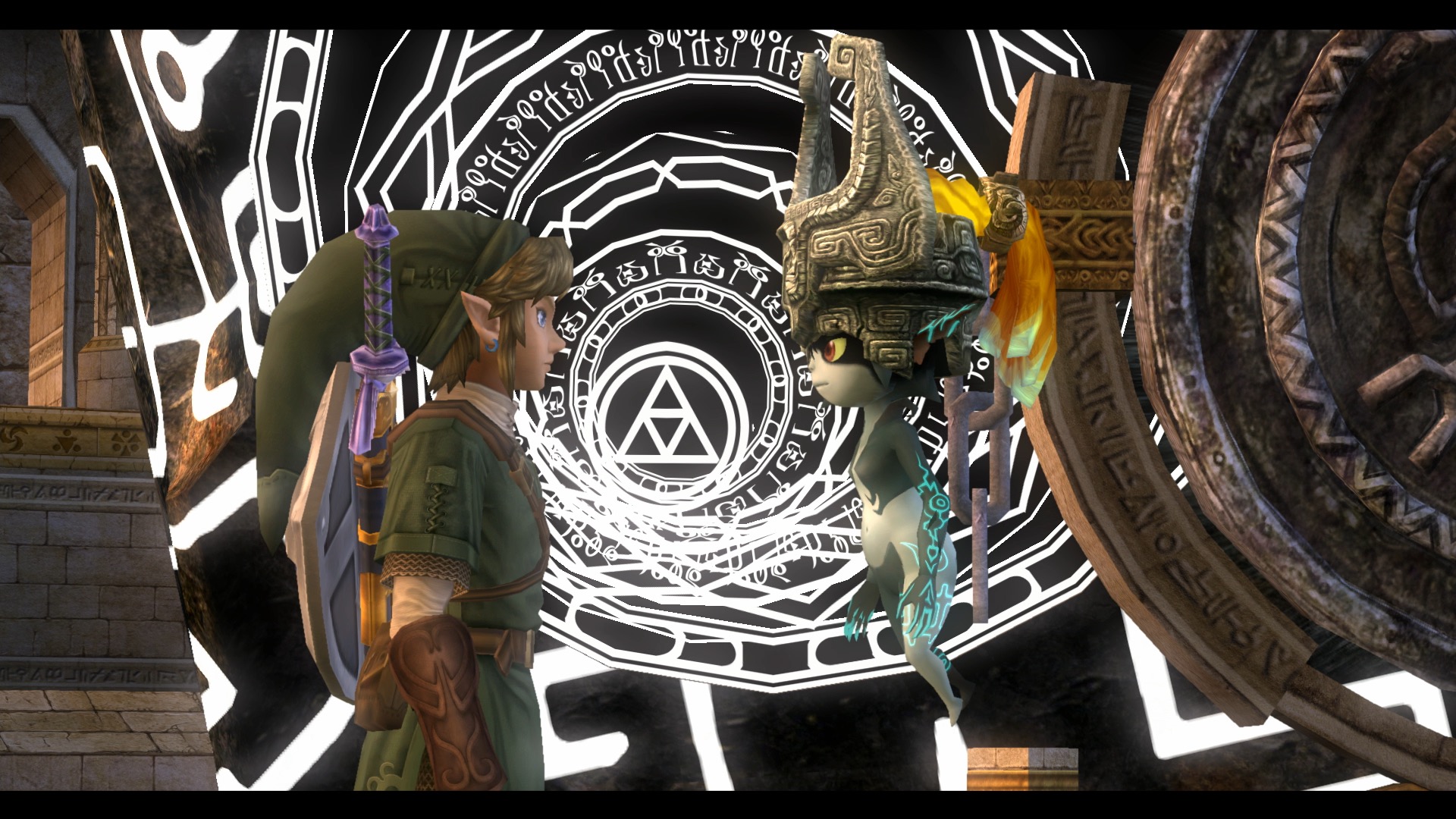The Legend of Zelda 1986 - 2016: The Evolution of Link
30 years ago, a stubby elf dude in a green windbreaker was told it was dangerous to go alone. He picked up his sword, held it up high, and wandered out into the world, taking us with him. We never looked back. The Legend of Zelda has spent three decades defining adventure in video games, each entry in the series doubling as both a new quest and a definitive statement about the capabilities of the Nintendo hardware it appears on.
Link, living up to his name, ties the series together. He’s always there, jaunty green cap and sword in tow, ready to save the day. But just like the consoles his games appear on, Link has changed and grown in ways both subtle and dramatic. Here is how he's evolved from 1986 to 2016.
The Legend of Zelda
As both a tiny sprite on the Famicom Disk System as well as the warm cover art adorning his debut, Link was indeed a nubby fellow. What he lacked in stature, he made up for in maneuverability and versatility. The original Link was fast for an action RPG hero, and his arsenal of items found in dungeons or purchased in shops gave him impressive reach. The boomerang extended his ability to grab errant rupees and hearts from across a screen, the bomb let him pound through walls, and the power bracelet let him move heavy objects just to name a few. He was nowhere near as expressive as he was nimble, but he had his signature move down pat: whenever he found a new item or a piece of the Tri-force, he’d hold it straight up in the air like a champ. While most Links appear in multiple games, the design of the original has never popped back up. His diminutive size and brown shock of hair is most closely echoed in the 3DS’ Link Between Worlds.
The Legend of Zelda 2: The Adventure of Link
Link grew up strong and he grew up right after all those mean Hyrule nights. Everything changed in Zelda 2. The overhead adventuring changed to a weird hybrid of map wandering, fetch questing for townsfolk, and sidescrolling, platforming action. Link himself grew as well, turning into a tall young man with a perpetual grin on his elfin face. Swordplay evolved even though Link’s reach was shortened. He could stab up or down while jumping, and even level up his health and attack power by gaining experience from downing the game’s insanely aggressive enemies. He also traded in his armory of attack items for a series of spells that granted physical abilities like increased defense or turning into a fairy. He also met a guy in the woods named Error. That’s pretty cool. This Link, along with the wild sidescrolling elements, disappeared after this entry.
The Legend of Zelda: A Link to the Past
Returning to the seamless overhead structure of the original, A Link to the Past transformed Link from a largely unreadable avatar to a gloriously personable cartoon character. Gone were the blank stares of the Link in 1 and 2. This guy bobed up and down, jogging around Hyrule and Ganon’s Dark World, his little hat flopping around on a head of weirdly punk rock pink hair. Thanks to a massive upgrade to his item store, Link also had a variety of new moves. He could run thanks to a pair of snappy boots, swim thanks to some flippers, and even genuflect at a desert shrine after finding an ancient book. He also turns into a bunny at one point. A Link Between Worlds for 3DS may borrow Link’s look from the original NES, but it’s A Link to the Past that is the basis for most of his moves and his nearly identical Hyrule.

The Legend of Zelda: Link’s Awakening
The strangest thing about Link’s 1993 transition to the technologically inferior, black and white Game Boy was that it also gave us a look at the hero in multiple art styles for the first time in game. Zelda 2 let us see Link tiny in the overworld and big in action stages, but Link’s Awakening opens and closes with bonafide cutscenes depicting Link as a wide-eyed anime hero. That incarnation of the character would stick around for two more games on Game Boy Color, Oracle of Ages and Oracle of Seasons. Game Boy Link’s moveset wasn’t dissimilar to the one in A Link to the Past, but he did pick up the ability to play multiple instruments rather than just the usual one flute. This was also the first time that a predominantly overhead view Link gained the ability to jump. He also hangs out with an owl who is secretly the soul of a magic space whale.
The Legend of Zelda: The Ocarina of Time
The Nintendo 64 brought Link into the third dimension, broadening his combat skills dramatically. Nintendo’s ‘90s-tastically named Z-targeting system locked Link’s perspective onto an enemy, letting him circle around like a proper sword fighter. The hero could dodge, roll, dive, and pull off a variety of swipes and stabs. More dramatic, though, was the ability to play as Link at two different stages of life. At the beginning, you play as an adolescent Link, short and able to use only a limited number of items. Later on, though, you play as Link as a young adult when he can wield heavier weapons and ride a horse. Travelling back and forth through time lent this Link a previously absent physicality, an intimate sense of how he related to the environment around him. This young Link appeared later in the deeply unsettling Majora’s Mask. His girlfriend is also a fish lady.
Weekly digests, tales from the communities you love, and more
The Legend of Zelda: The Wind Waker
When Zelda made the jump to Gamecube, it reimagined Link’s world as a primary-colored cartoon archipelago whose emotive inhabitants looked wholly unique. Squat and barely into his teens, Toon Link moves more swiftly than the Nintendo 64 Link as he sails from island to island above a long sunken Hyrule. While this Link grunts and yells like the newly vocal Ocarina Link, his face was even more communicative, the broad cartoon features expressing fear, doubt, impatience, determination, and real giddiness. For the first time he also teamed up with other characters, mentally directing friends Medli and Makar around dungeons using the titular Wind Waker baton. Toon Link popped back up in two Nintendo DS adventures, The Phantom Hourglass and Spirit Tracks. His mentor is also a boat possessed by an old man.

The Legend of Zelda: The Four Swords
What began as a side game in the Game Boy Advance version of a Link to the Past ultimately expanded into two more games on Gamecube and Nintendo DSi, as well as the excellent GBA adventure The Minish Cap. As indicated by the title, this Link used the mystical Four Sword that lets him split into four different bodies. In addition to his traditional green tunic, he also splits into red, blue, and purple garbed Links as well. Many of the Four Sword quests involve puzzle solving focused around using multiple bodies, an unusual spin on the spatial challenges common in Zelda games. The Minish Cap version is even weirder because Link’s hat is an irascible warlock that can shrink him down to the size of a ratty old sock.
The Legend of Zelda: Twilight Princess
After years of running around as a kid, the young adult Link returned in the surreal Twilight Princess. And like most young adults, he had a pretty rough job. This Link is a goat herder, and nothing says high adventure like goat herding! Actually, he stops herding goats and goes on a quest to save Hyrule from being eternally merged with the spooky Twilight Realm, but there’s still a lot of goat herding up top. While the costume tweaks didn’t bring this Link too far from the adult version in Ocarina of Time, he did have one significant new characteristic. When he’s in the Twilight Realm, he forcibly turns into a wolf who bites enemies glowing shadow hearts directly out of their chests. Pretty hardcore. He also meets a yeti and has to help make soup for his sick wife because he’s nice like that.
The Legend of Zelda: Skyward Sword
For better or worse, Link changed a lot in his marquee Wii exclusive. The console’s motion controller recast the Zelda swordplay as a series of exacting puzzles, with each motion of your actual arm being mimicked by Link on screen and needing to slash enemies in specific ways. (In theory at least. Skyward Sword’s motion controls can vary wildly in terms of precision based on the environment it’s played in.) But this Link was different in other ways too. For starters, he has a stamina meter that can run out if he sprints too long or climbs a cliff face too quickly. He’s also a craftsman now, gathering up raw materials to make new items and improve old ones. Skyward Sword Link also hangs out with a giant red bird with a hilariously oversized beak and his sword is also an irritating, over-sharing artificial intelligence that loves to skate.



